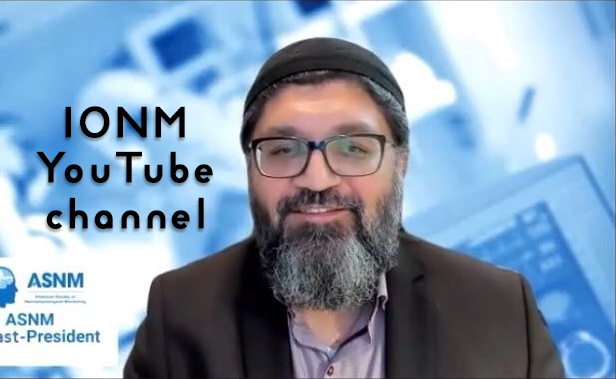Multimodality Intraoperative Neurophysiological Monitoring (IONM) with Selective Dorsal Root Rhizotomy For patients with Cerebral Palsy
DOI:
https://doi.org/10.5281/zenodo.13927264Keywords:
Cerebral palsy, spine, IONM, SSEP, EMG, TCeMEP, TOF, dorsal root rhizotomyAbstract
Selective Dorsal Root Rhizotomy (SDR) is a neurosurgical procedure aimed at alleviating spasticity in cerebral palsy patients by selectively severing sensory nerve rootlets in the spinal cord. This process helps reduce spastic muscle activity while preserving motor function. The use of multimodal intraoperative neurophysiological monitoring (IONM) techniques—such as Somatosensory Evoked Potentials (SSEP), Transcranial Motor Evoked Potentials (TCeMEP), and Electromyography (EMG)—has significantly enhanced surgical precision, leading to improved outcomes. Long-term studies report enhanced motor function and quality of life, with reduced reliance on further treatments, positioning SDR as a valuable option for managing spastic cerebral palsy. This literature review explores the evolution of SDR, its clinical effectiveness, patient selection criteria, and long-term outcomes for spasticity management in CP. The review consolidates findings from various studies to assess the impact of SDR on motor function, complications, and quality of life while comparing it with alternative spasticity management options. By synthesizing the current literature, this review aims to offer a comprehensive perspective on the role of SDR in enhancing functional outcomes for children and adults with CP.
References
Patel DR, Neelakantan M, Pandher K, Merrick J: Cerebral palsy in children: a clinical overview. Transl Pediatr. 2020, 9:S125–35. 10.21037/tp.2020.01.01.
Damiano, D. L., et al. (2013). Cerebral palsy: clinical care and neurological rehabilitation. The Lancet Neurology, 12(9), 844-852.
Park, T. S., et al. (2013). Outcomes after selective dorsal rhizotomy in children with spastic cerebral palsy. Journal of Neurosurgery: Pediatrics, 12(4), 403-410.
Peacock, W. J., et al. (1987). Selective posterior rhizotomy for the relief of spasticity in cerebral palsy. The Lancet, 330(8550), 41-42.
Albright, A. L. (1987). Spasticity management in cerebral palsy. Journal of Child Neurology, 2(1), 44-49.
Park, T. S., & Johnston, J. M. (2006). Surgical techniques of selective dorsal rhizotomy for spastic cerebral palsy. Neurosurgical Focus, 21(2), 1-5.
Mittal S, Farmer JP, Poulin C, Silver K: Reliability of intraoperative electrophysiological monitoring in selective posterior rhizotomy. J Neurosurg. 2001, 95:67–75.10.3171/jns.2001.95.1.0067.
Grunt, S., et al. (2011). Long-term functional outcome of selective dorsal rhizotomy in children with spastic cerebral palsy. Journal of Neurosurgery: Pediatrics, 7(1), 16-20.
Langerak, N. G., et al. (2014). Ten-year follow-up after selective dorsal rhizotomy for spastic cerebral palsy. Developmental Medicine & Child Neurology, 56(12), 1182-1189.
Jahangiri, F. R., Silverstein, J. W., Trausch, C., Al Eissa, S., George, Z. M., DeWal, H., & Tarasiewicz, I. (2019). Motor Evoked Potential Recordings from the Urethral Sphincter Muscles (USMEPs) during Spine Surgeries. The Neurodiagnostic journal, 59(1), 34–44. https://doi.org/10.1080/21646821.2019.1572375
Toleikis, J. R., Pace, C., Jahangiri, F. R., Hemmer, L. B., & Toleikis, S. C. (2024). Intraoperative somatosensory evoked potential (SEP) monitoring: an updated position statement by the American Society of Neurophysiological Monitoring. Journal of clinical monitoring and computing, 38(5), 1003–1042. https://doi.org/10.1007/s10877-024-01201-x
Jahangiri, F. R., Asdi, R. A., Tarasiewicz, I., & Azzubi, M. (2019). Intraoperative Triggered Electromyography Recordings from the External Urethral Sphincter Muscles During Spine Surgeries. Cureus, 11(6), e4867. https://doi.org/10.7759/cureus.4867
Tedroff, K., et al. (2015). Long-term effects of selective dorsal rhizotomy in children with cerebral palsy. Developmental Medicine & Child Neurology, 57(7), 635-641.
Turner RP. Neurophysiologic intraoperative monitoring during selective dorsal rhizotomy. Journal of Clinical Neurophysiology. 2009, 26:82-4. 10.1097/WNP.0b013e31819f9077
Park TS, Liu JL, Edwards C, Walter DM, Dobbs MB: Functional outcomes of childhood selective dorsal rhizotomy 20 to 28 years later. Cureus. 2017, 9. 10.7759/cureus.1256.
Munger ME, Aldahondo N, Krach LE, Novacheck TF, Schwartz MH: Long‐term outcomes after selective dorsal rhizotomy: a retrospective matched cohort study. Dev Med Child Neurol. 2017, 59:1196-1203. 10.1111/dmcn.13500.
Gump WC, Mutchnick IS, Moriarty TM: Selective dorsal rhizotomy for spasticity not associated with cerebral palsy: reconsideration of surgical inclusion criteria. Neurosurg Focus. 2013, 35:E6. 10.3171/2013.8.FOCUS13294.
Nordmark E, Josenby AL, Lagergren J, Andersson G, Strömblad LG, Westbom L: Long-term outcomes five years after selective dorsal rhizotomy. BMC Pediatr. 2008, 8:1-5. 10.1186/1471-2431-8-54.
Steinbok, P. (2001). Outcomes after selective dorsal rhizotomy for spastic cerebral palsy. Child's Nervous System, 17(1-2), 1-18.
Tilton, A. H. (2009). Management of spasticity in children with cerebral palsy. Seminars in Pediatric Neurology, 16(2), 82-89.
Gilmartin, R., et al. (2000). Long-term use of intrathecal baclofen to manage spasticity. Developmental Medicine & Child Neurology, 42(11), 721-727.
Gough, M., & Shortland, A. P. (2012). Principles of serial casting and splinting in the management of spasticity. Journal of Pediatric Rehabilitation Medicine, 5(1), 55-61.
McLaughlin, J. F., et al. (2002). Selective dorsal rhizotomy: meta-analysis of three randomized controlled trials. Developmental Medicine & Child Neurology, 44(1), 17-25.
Downloads
Published
How to Cite
Issue
Section
License
Copyright (c) 2024 J of Neurophysiological Monitoring

This work is licensed under a Creative Commons Attribution 4.0 International License.





